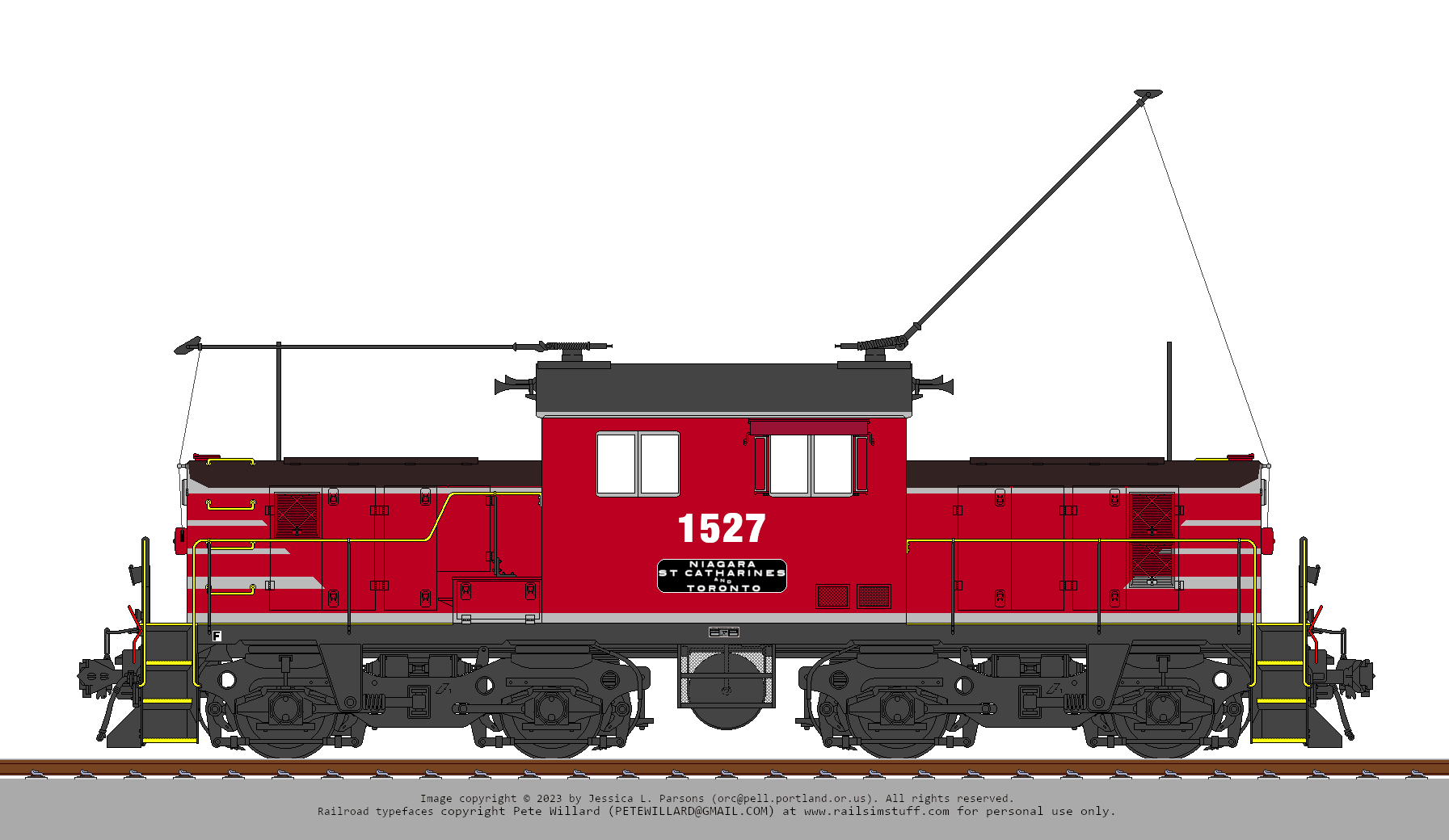In the 1980s the Canadian National started to abandon and/or divest themselves of a variety of underperforming line; among those was most of the old Niagara St Catharines & Toronto, which was purchased by the owners of the Guelph & Goderich Railway as part of a fairly massive expansion by acquisition. It wasn’t electrified any more, but since it was a radial it ended up under the control of the Ontario Radial Railway Company, which had just merged with the G&G to form the Ontario Southwestern.
The newly reincorporated NStC&T collected a few more CN branches in the vicinity of Port Colbourne, and settled down to a modestly profitable life as merger fever went on around it (most significantly ending up, via the OSW, as a subsidiary of the Parsons Vale Lines) but had an uneventful life until 2011, when a marine supplier across the canal from St Catharines wanted to resume freight service to their warehouse. The line from Queenston to Port Weller had laid idle for about 10 years, so when the RS-18s & RS-23s started rolling up the line you can just imagine the complaints that were made about those awful diesels “disturbing the quiet” and stinking up the neighborhood.
The solution the NStC&T had for this – one that was suggested by the Parsons Vale head offices in Montréal – was to string overhead wire over the branch and use an motor to pull trains back and forth a'la the Galt industrial spur on the Lake Erie & Northern. The NStC&T had a disused transfer caboose (a demotored MOW flatcar) that could be remotored and put into service for much less than a new class O would cost, so it was done.
In 2020, after a couple of rounds of diesel fuel becoming hideously expensive, the NStC&T decided that it would start to re-electrify their system at 1500VDC (instead of the 600VDC the Lakeshore track was currently running under.) This electrification went fairly slowly – a connection needed to be made between the Thorold city track & the canal line to get around having to zig-zag across the CN’s Grimsby Subdivision, and new motors needed to be borrowed or bought – but by the middle of 2025 the entire line from St. Catharines to Port Colbourne was under wire again.
